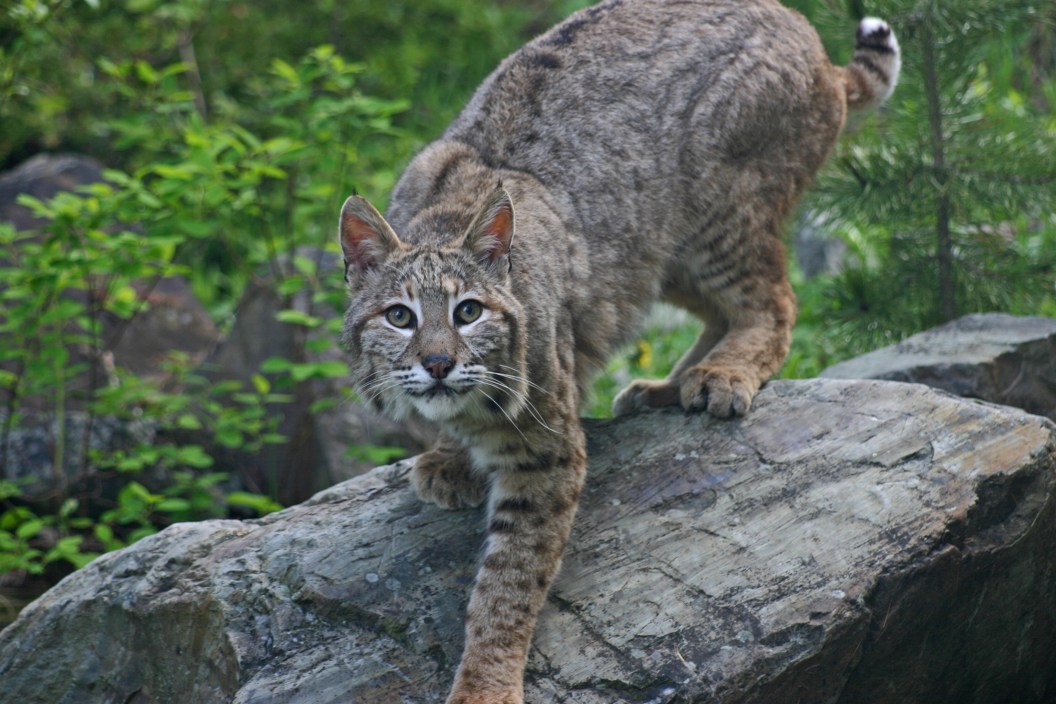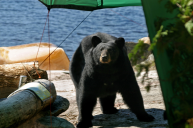There's nothing more terrifying than being attacked by a wild animal while sleeping. OK, maybe one thing is more terrifying: being attacked by a rabid wild animal while sleeping—which is exactly what happened to a youth camp counselor in Connecticut at the end of June.
On June 30 at 2:04 a.m., a Wilderness School camp counselor was attacked by a bobcat on Selden Neck Island while sleeping in a hammock.
According to the Deep River Fire Department, there were actually three victims, as two other counselors jumped in to assist and fight off the animal. While we don't have any details, it seems they were successful—and, in fact, were able to kill the aggressive bobcat (though it's unclear how exactly).
The fire department reported that all three adults were taken to a hospital for treatment, and all nine children at the camp were transported safely from the island to the shore.
Connecticut's Department of Energy and Environmental Protection told The New York Times it is investigating the incident. The DEEP told the Times, "The man, and two additional adults, subsequently killed the bobcat."
The bobcat was sent to the state public health laboratory and tested positive for rabies. Officials do not believe any of the children came into contact with the rabid animal.
According to the Times, the initial victim had led a group of young Wilderness School campers. The Wilderness School is a program for youth ages 13-21 who need extra support or have experienced trauma. The school has offered programs since 1974, including expeditions ranging from one to 20 days. Youth participants experience hiking, camping, rock climbing, canoeing, and other activities. The program aims to create skills in team-building, self-reliance, conflict resolution, and peer relations.
Those were skills the three counselors demonstrated well as they dealt with the dangerous wildcat. "Due to their courageous and outstanding efforts, the safety of the youth was maintained, and they were not harmed," said Michael Williams, Deputy Commissioner of Operations for Connecticut.
While bobcat numbers were reduced in the state from 1935 to 1971, the animal became protected in 1972 due to deforestation of their natural habitat. But the state believes the predator's numbers are growing, although there are no plans for hunting or trapping. According to a fact sheet on the DEEP's site, bobcats have been seen in all eight counties in the state. Despite their population growth, attacks are very rare, and bobcats aren't known to carry diseases, including rabies.
Bobcats come out after dusk and before dawn, and they tend to keep to themselves. They are incredibly patient and will stalk their prey for as long as necessary. Connecticut is closely monitoring their population since they are one of the state's top predators. DEEP collects and analyzes the approximately 20-30 bobcats that are hit by vehicles each year, checking their physical condition, age, and breeding condition.
Peter Yazbak, a spokesman for the Connecticut Department of Children and Families, told outlets that this Wilderness School expedition attack is the first animal encounter he's aware of.
"It could've been worse," Yazbak said. "We're happy that everyone's just doing OK."
READ MORE: Montana River Guide Attacked by Black Bear While Camping




